Historical Walking Tours
Woodland Cemetery is committed to discovering and sharing the local history that is recorded through gravestones and records on our grounds. Please feel free to download our self-guided walking tours – maps included – and visit the cemetery to learn about important individuals and events in London’s history.
- They Are Not Here - WWI Soldiers Memorialized at Woodland
- Woman of Woodland
- The Victoria Day Disaster
- Victorian Mourning Customs
- Victorian Monument Symbolism
- General Historical Walking Tour
- Canada 150 Confederation Era Walking Tour
- Woodland Historical Tour via QR code
The first Anglican minister sent to serve London was the Reverend Edward J. Boswell. He, with the Anglican congregation, bought 9 lots that were to be used for a church and graveyard. Six of the lots were on Dundas and 3 were around the corner on Ridout Street. The congregation erected the frame for St. Paul’s Church in 1830. Burials began that year, but building stopped.
Mr. Boswell was replaced by the Reverend Benjamin Cronyn in 1832. Mr. Cronyn sold off the lots and bought the present site of St. Paul’s Cathedral at Richmond and Queen Street. That winter, the 80’ by 40’ frame of the church was mounted on sleds and pulled by oxen to the new site. The church was finished in time for Christmas Services in 1833. Burials on the grounds were already taking place and graves from the old site opposite the courthouse were removed to the new churchyard.
In 1846, Mr. Cronyn bought 16 acres of land about a mile east of town. He envisioned the land as an excellent cemetery. The congregation didn’t share his vision, believing it was too far out in the wilderness. In 1849, the town forbade any further interments in St. Paul’s churchyard. The rector sold the land to St. Paul’s for exactly what he paid for it, although the lots had risen in value 6-fold in the 3 years since he had bought them. The first burial in the new St. Paul’s Cemetery was the rector’s oldest son, Thomas Cronyn.
In 1849, most of the remains and gravestones were removed from the crowded churchyard to the new cemetery. Thirty years later, the city had grown to surround this cemetery at St. Paul’s Grove. In June, 1879, the corporation of the village of London East informed the rector and wardens that a bylaw was about to be passed prohibiting further interments. A special committee of vestry was set up to search for a new site. By the middle of August they had secured a new location on the banks of the Thames River, 2 or 3 miles west of the city. It cost just under $10,000 and consisted of 56 acres, but that was later expanded to include almost 100 acres. Part of the property, previously owned by William Blinn, had been known as Woodland Park and so the name Woodland was applied to the cemetery.
The first man buried in Woodland was harness maker, Charles Dunn, on December 5, 1879. The removal of the remains from the old St. Paul’s Cemetery to Woodland began in May, 1880 and took six years to complete. It involved thousands of markers and monuments, over 1,400 of those buried in the Potter’s Field and hundreds who died in military service. The 1887 Western Fair opened at its new location, a beautiful natural site known as Queens Park, which had previously been the site of St. Paul’s Cemetery.
At Woodland’s northern boundary was the cemetery wharf. Three steamers offered passage from the foot of Dundas Street to Springbank Park and then stopped at the wharf. On May 24, 1881, the steam boat Victoria capsized not far from the wharf and more than 180 men, women and children died. More than 50 of the victims were laid to rest in Woodland Cemetery.
The London Street Railway was given permission to build a rail bed across the north property line of the cemetery, en route to Springbank Park. For years trolley cars passed by, but when they stopped running the land became a popular trail for walkers, joggers and bicyclists, providing passage under the Guy Lombardo bridge.
In September, 1900, new gates were constructed out of sandstone and wrought iron. The date “1879” and the name “Woodland Cemetery” have since been inscribed in the pillars.
The soldiers’ plot was laid out over a quiet wooded slope in 1939. It would accommodate 1,500 graves. Today it is called the Veterans’ Section.
London’s first crematorium was built in Woodland and was in operation by 1964. It was designed to look like an old English stone chapel. By 1998, cremations had risen significantly and a new crematorium with two retorts went into service. The old stone chapel was transformed into an indoor columbarium called Woodland Sanctuary. It has niches to hold urns allowing families the opportunity to see their loved-ones urn when they visit.
Woodland created London’s first outdoor columbarium in 1980. Columbarium Park is in front of Woodland Sanctuary. It has niches designed into the six sided columbaria and is finished in red granite. Each columbarium holds 144 niches and a total of five columbaria were in place by the year 2000.
The transfer of over 160 years of records from the cemetery’s books and registers to computer files began in 1992 and took 3 years to complete. In a continuing effort to preserve London’s history, we encourage anyone with information on those interred at Woodland to assist us in updating or completing these files.
In 1994, the Columbarium Wall was built into the hillside near the western center of the cemetery. It is faced with red granite. Steps lead up to the pergola marking the wall’s location below.
Woodland has been producing flat markers for its families since the 1950s. In the summer of 1996, a full range of standing monuments, statues, vases, urns and other memorials became available through the cemetery office.
“Chapel of the Ascension”
Light spills through the doorway, highlighting the dark stained wooden pews. Behind is the stained glass window depicting the Ascension of Christ. The scene is surrounded by white marble walls reflecting the hues of the white Carrera marble. Restoration began on the building in 2011, allowing for the addition of 4 columbarium features. The chapel is available for services at Woodland Cemetery.
Located in the historic Woodland Mausoleum
Available for committal services
Refurbished
Wheelchair accessible
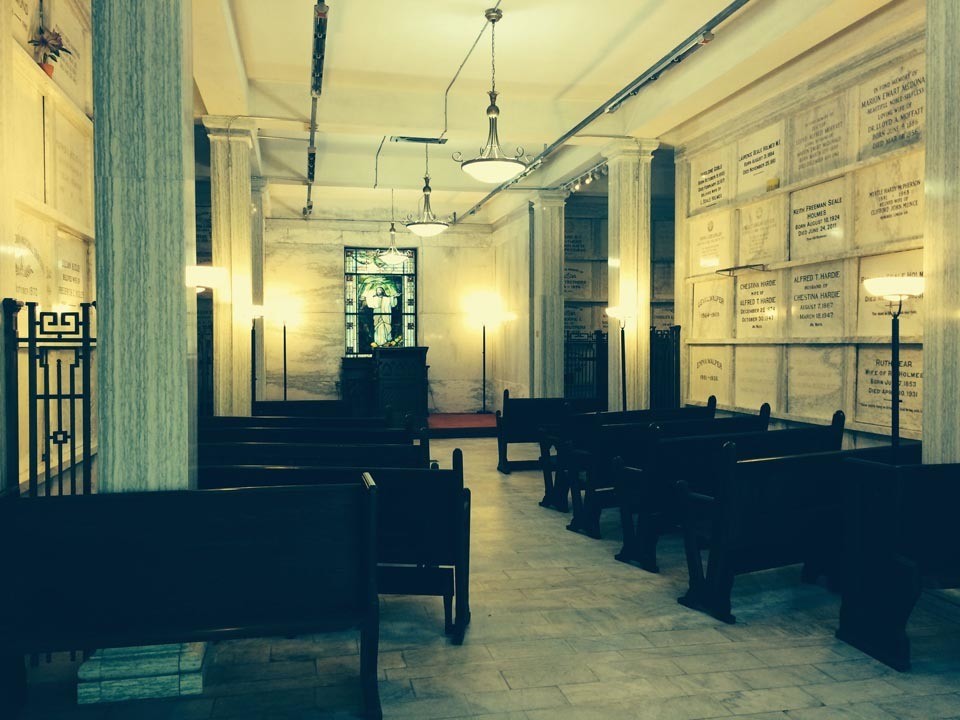
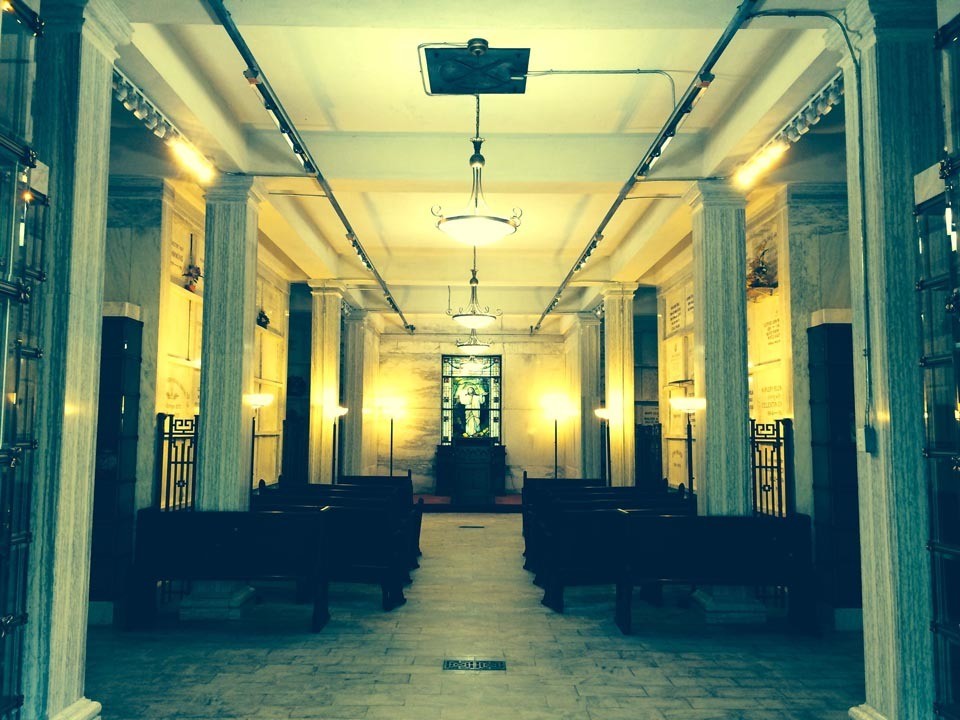
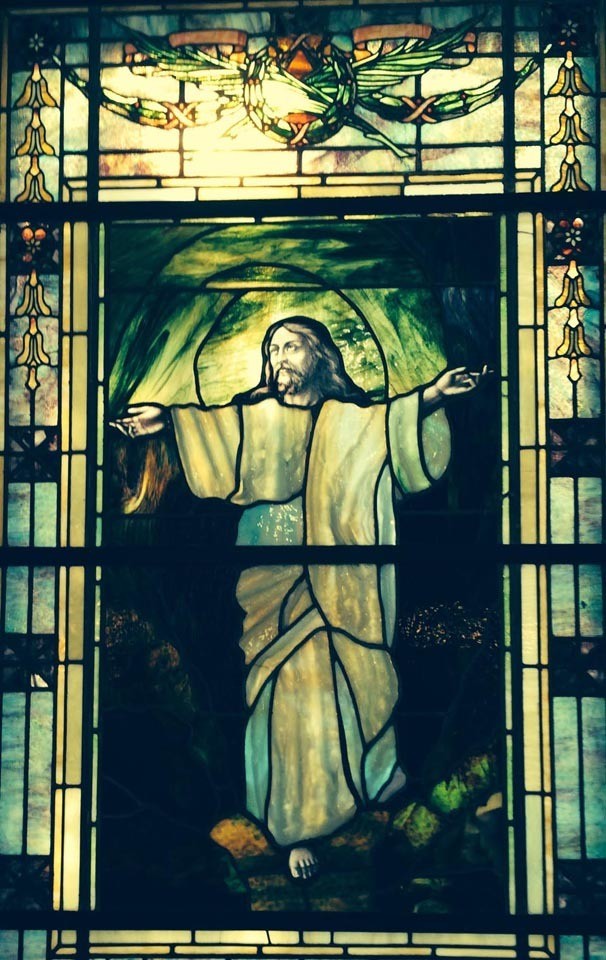
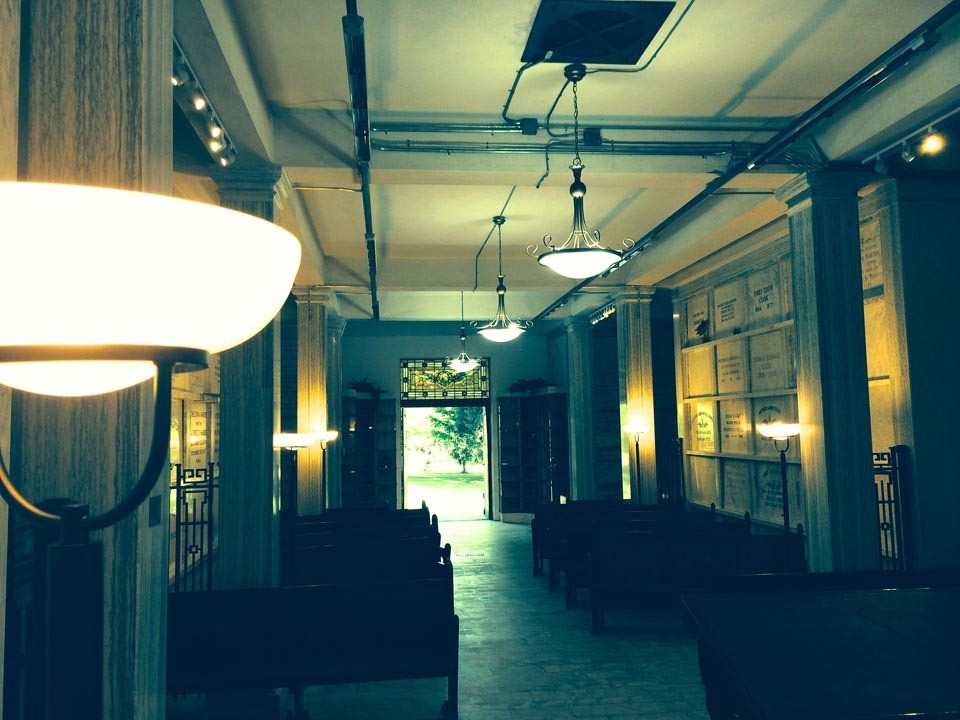
Scattering Garden
In 2000, the creation of a scattering garden for cremated remains was developed and it is now being used. It is located south-east of the Pixley Mausoleum. It features 4 gardens, named after the seasons of the year. Winter, Spring, Summer, Fall. Future plans include the introduction of circular walls and niches.
The Wardens of St. Paul’s Cathedral who took charge of the cemetery for the first 30 years included Henry D. Long, Richard Bayly, John Labatt, William J. Reid, T. Herbert Marsh, George Laing, John S. Perce, W.T. Strong, J. Mattinson, H.E.Gates, F.W. Farncombe, C.B. Hunt, E. Paull and Dr. Moorehouse. Most of these men are laid to rest at Woodland.
They Are Not Here: WWI Soldiers Memorialized at Woodland
The First World War was the bloodiest conflict in Canadian history, with over 600,000 Canadians serving and 61,000 war deaths. Loved ones' sorrow was made particularly poignant because of the fact that soldiers in WWI were buried where they fell, in Commonwealth Graves near the front lines. This left families with no grave to visit, and no concrete place to go to find closure and mourn. Woodland Cemetery, which was opened in 1879, became important to these families as it provided them such a place. The families of the soldiers on this tour are ones that chose to memorialize their sons with gravestones or inscriptions in our cemetery, though the soldiers themselves (with few exceptions) are not here. There are over 50 memorials of this nature in the cemetery. It is one of Woodland's longstanding goals to uncover the stories of these individuals, bringing important local history back into the public consciousness. This video tells the stories of a few of the soldiers commemorated on our grounds.
Canada 150: London's Confederation History
In the 1860s, London was a rapidly expanding town. The prospect of Confederation was an exciting one, as it promised Canada’s independence as a united nation state. Many Londoners benefited from Confederation as Canada became more economically self-sufficient, local industries were founded, and the “intercolonial railway” began to connect communities. This 30 minute documentary, created by Woodland historical staff, tells the story of London in the 1860s and some of its interesting citizens who are buried in Woodland Cemetery.”
Annie Pixley: Queen of the Victorian Stage
Fulford - Pixley Mausoleum
Annie Pixley, a popular stage actress of the 1870s, won international acclaim for stage performances including her role in M'Liss, Child of the Sierras and Josephine in Gilbert and Sullivan’s HMS Pinafore. After marrying fellow actor Robert Fulford she frequented the London area, spending many summers at Fraser House, Port Stanley. On occasion she performed at London's Grand Opera House (now the Grand Theatre). Tragedy struck in July, 1886 when Annie’s 12 year old son Thomas died of what was known as "brain fever". He was buried at Woodland Cemetery. Tragedy would strike again Nov. 8th, 1893, when Annie died while visiting relatives in England. In memory of his wife and son, Robert Fulford built the Fulford - Pixley Mausoleum. It was completed in 1897. A popular attraction to visitors in London, it is considered to be among the finest funerary monuments in Canada. For more information about Annie’s life and story, and about the Mausoleum, please watch our mini-documentary below, featuring local London author and historian Victoria Purcell.
Part One Part Two
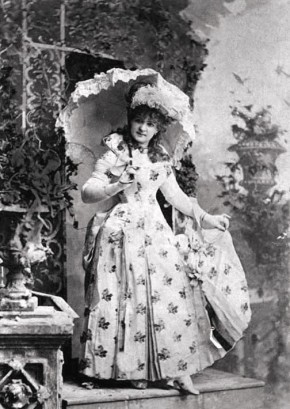

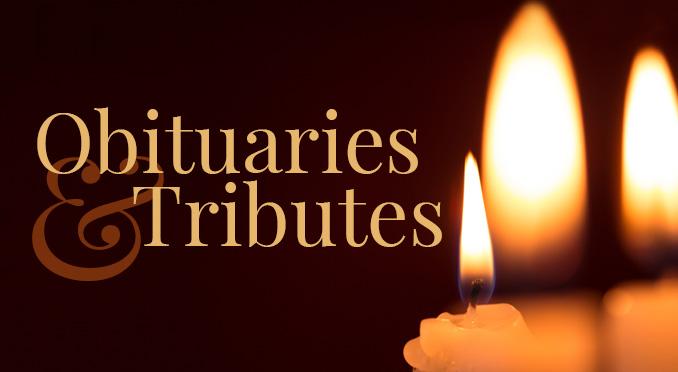


 Owned and operated by St. Paul's Cathedral, London, On
Owned and operated by St. Paul's Cathedral, London, On